编者按
2020年起,为促进中华优秀传统文化的国内传播与国际化译述,上海外国语大学英语学院打造大型实践活动“记忆的味道”,追寻五湖四海的记忆,讲述文化背后的故事。上外英院传统文化志愿服务队于每年寒暑假分赴祖国七大方言区,聚焦非遗及传统文化进行实践与探索。活动围绕家乡年俗、红色文化、手工游艺、音乐舞蹈、二十四节气、非遗文化、非遗美食等中华优秀传统文化进行实践,取得丰硕成果,曾获得“挑战杯”“互联网+”“致远计划”社会实践大赛等国家级、市级、校级奖项。本季“记忆的味道”聚焦传统建筑,将推出双语视频、双语推送讲述建筑艺术中的非遗文化,感悟非遗传承背后的动人故事,推动中华优秀传统文化的国内外传播。
粤方言区
粤方言,俗称白话,又称广东话,是广府民系的母语,是广府文化最重要的基因和最具特色的符号。(Yue dialect, commonly known as Baihua or Cantonese, is the mother tongue of Cantonese people, and the most significant gene and distinctive symbol of cantonese culture.) 粤方言使用范围广泛,广泛通行于中国南方的广东中西部、广西东南部、香港、澳门和东南亚的部分国家或地区。
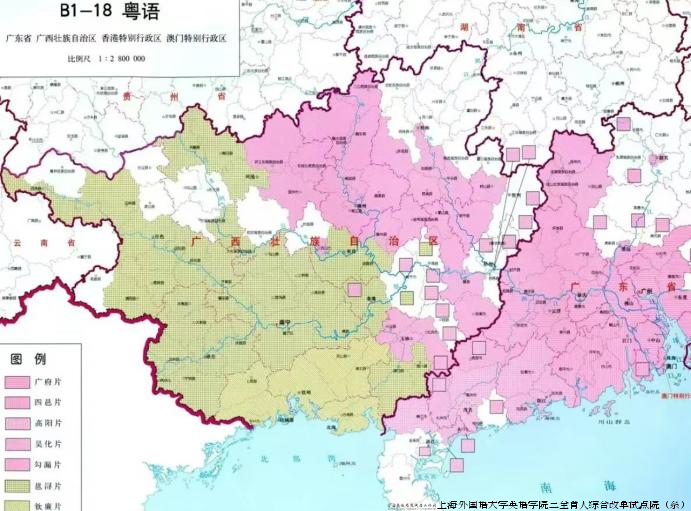
粤方言区分布图
摘自《中国语言地图集第2版汉语方言卷》
本期“记忆的味道”将带领大家走进广府片区中的一座悠久历史的古村落——北山村,探寻岭南地区传统民居建筑艺术的瑰宝。
初识秀毓北村
北山村作为一座历史悠久的古村落,开村于南宋嘉熙元年(1237年),形成于明清朝。村中保留了大量岭南地区传统民居建筑 (Beishan Village preserves a large number of traditional residential buildings in the Lingnan region), 现存历史建筑100余栋,建筑风格古朴典雅,其中有多栋入列文保单位,其建筑技艺是我国非物质文化遗产的重要组成部分。 (The building techniques of Beishan Village have been included in the representative list of state-level intangible cultural heritage.)
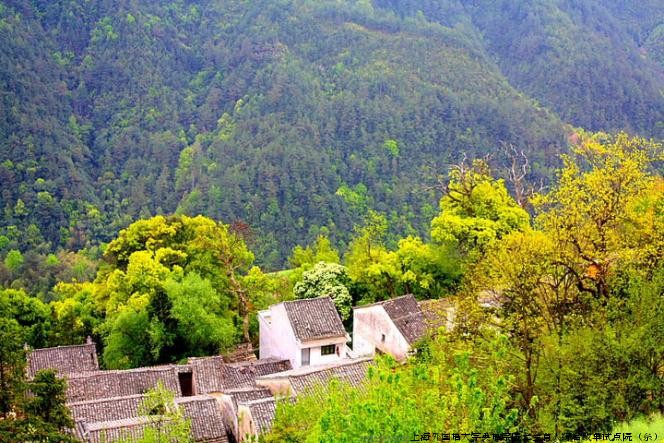
风景秀丽的北山村
北山村独特的建筑风格,体现了岭南地区的传统民居风格。村中的古老民居多为砖木结构,屋顶上覆盖着红色的瓦片,整体呈现出古朴典雅的风貌。(Mostly featuring a masonry-timber structure, the ancient dwellings in the village are roofed with red tiles, showing an elegant style with classic simplicity.) 这些古老的建筑融合了中式和西式的元素 (The elements of Chinese and Western styles are melted into these ancient buildings),展现了岭南地区独特的建筑艺术风格。
寻觅古祠余
北山村的历史建筑主要由古祠堂、古庙宇、古宅组成。(The historical architectural complex in Beishan Village is mainly composed of ancestral shrines, ancient temples, and old houses.) 其中位于北山村东侧的杨氏大宗祠可谓是岭南传统建筑艺术的典范。
宗祠最初作为祖先崇拜的产物,是地方民俗文化的重要载体,也是宗族成员对家乡血浓于水的感情寄托。(Originally as the product of ancestor worship, ancestral shrines have become the embodiment of local culture and the sustenance of emotional belonging.) 各宗族为祭祀祖先而建造的祠堂,也随着家族和村庄的代代繁衍逐渐发展为村中规模最大、质量最好、历史文化内涵最为丰富的建筑之一,不仅集中了岭南传统建筑艺术的精华,而且记录着家族、村庄繁衍兴盛的动人故事。(It not only captures the quintessence of traditional Lingnan architecture, but also tells touching stories about the prosperity of families and villages.)
杨氏大宗祠始建于清朝同治七年(1868年),其主体建筑坐南向北,面阔五间,进深三间,硬山顶,青砖墙,有殿、堂、厅、院、厢、廊、乐台,两边还有书馆。祠堂采用园林式设计,中轴线对称的建筑布局,石础木框架的抬梁结构,以及精美的石雕、砖雕、木雕、灰雕等装饰,气宇恢宏,别具匠心,体现了清代中国劳动人民的聪明智慧和高超的建筑技艺。(Inspired by the design of Chinese gardens, Yang Clan Ancestral Hall applies a symmetrical layout with a central axis, a post-and-lintel architectural structure in wooden framework founded on stone, as well as exquisite decorations such as carvings in stone, brick, wood, and lime. Together they render the shrine magnificent, show the ingenuity, and manifest the wisdom and masterly architectural skills of Chinese laborers from the Qing dynasty.) 1986年,杨氏大宗祠被列为珠海市文物保护单位,为古建筑艺术的典范。(In 1986, Yang Clan Ancestral Hall was listed as one of Zhuhai cultural relics protection units, thus becoming an example of the ancient architectural art.)
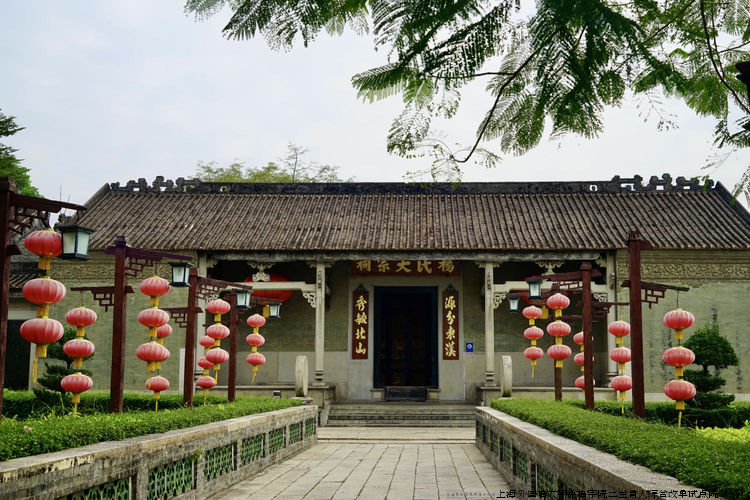
杨氏大宗祠外部景象
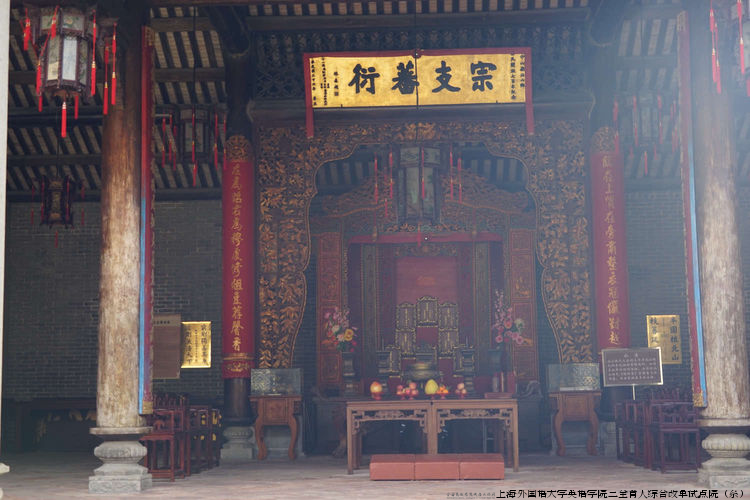
杨氏大宗祠外部景象
幸睹古村新辉
自2007年起,北山古村开始系统化统筹辖区内的历史文化建筑,修复古建筑,融合新用途,发展成了涵盖吃、喝、学、玩、住等多个用途的古朴建筑体。(Since 2007, Beishan Village has launched a campaign to restore the ancient buildings and develop the historical architectural complex with new functions.) 在新时代的古建市井间,有代代相传的建筑技艺,亦有生生不息的历史血脉。
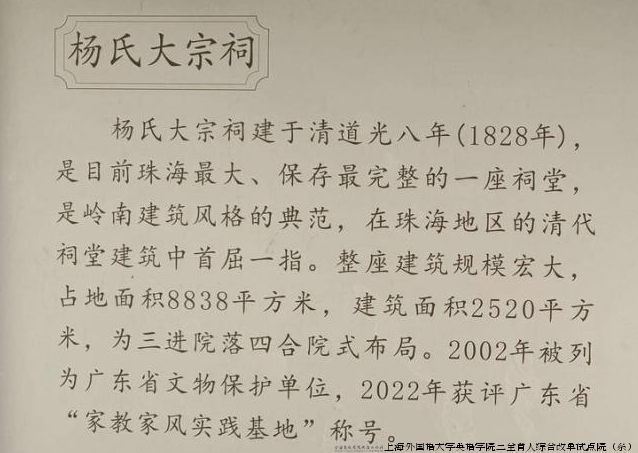
杨氏大宗祠被列为广东省文物保护单位
在精妙的建筑技艺中体会先民的探索和创造力,从匠心传承里见证古老智慧与现代文明的交融。北山村的一砖一瓦,仍诉说着它生生不息的岭南故事。(One can not only feel the ancestors’ exploration and creativity from their excellent architectural skills, but also witness the integration of ancient wisdom and modern civilization from the inheritance of craftsmanship. Every brick and tile in Beishan Village is still telling the enduring story about Lingnan.)
参考文献
[1] 《珠海千年古村落——北山村》
https://www.meipian.cn/4yobx6hw
[2] 《宗族文化 || 大宗祠、少宗祠、祖祠、祖厝有什么涵义吗?》
https://mp.weixin.qq.com/s?__biz=MzI5NzA0MTY0Nw==&mid=2647877113&idx=5&sn=d266a8857b1a5443b2d73eec0c95bb71&chksm=f49cee79c3eb676f920ec20280a164025f42d4f94aff4e71feb2aa41dfd32acd6c1f181ce195&scene=27&poc_token=HAxdvmWjrzgyHHRL9BRHWJoJ8pRfPz9GF9w6ZfRZ
[3] 中国新闻网:《岭南文化的宝典·粤语》
https://www.chinanews.com.cn/hwjy/2012/12-27/4443636.shtml
我要评论 (网友评论仅供其表达个人看法,并不表明本站同意其观点或证实其描述)
全部评论 ( 条)